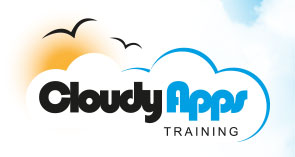


Introduction to TCP/IP v4
Duration: 5 Days
Course Background
Unlike traditional TCP/IP networking courses this course can be considered as a TCP/IP+ course The plus(+) is because it not only covers traditional TCP/IPv4 but also considers TCP/IP from the perspective of cloud computing and the Internet of Things (where the things are communicating with each other and the web over TCP/IP) The traditional topics covered will include
- Configuring hosts and access internetworks for TCP/IP
- Understanding the various components of TCP/IP such as IP, ARP, TCP, UDP and HTTP
- Appreciating the differences between switches and routers
- Understanding how IP addresses and subnet masks can be assigned and the roles and configuration of routers in the construction and design of internets
- Client server aspects of TCP/IP in the context of application protocols such as HTTP, DNS, SNMP
- Basic configuration and network problem solving techniques
- Network setup on virtual machines and machines in the cloud
- Running TCP/IP on small embedded systems
Course Prerequisites and Target Audience
Basic knowledge of networking and some experience of basic Linux or Windows system configuration will be helpful.
Course Outline
- Overview of computer networking and computer network protocols
- A short history of TCP/IP and the World Wide Web (WWW)
- Introduction to the architecture of TCP/IP
- Overview of protocol layering concepts and the ISO/OSI 7 layer model
- The layers present in TCP/IP
- Physical and link layers - a brief survey
- Local networks and MAC addresses
- How IP can run over different physical networks
- An IP address identifies a network and an interface on that network
- IPv4 addressing - Classful and Classless
- Problems faced by IPv4 when the number of network devices becomes very large
- IPv6 and how IPv6 attempts to overcome the problems associatec with IPv4
- Building and deploying collections of networks using routers
- DNS and the identification of machines (interfaces) by name
- IPv4 in greater depth
- Address Resolution Protocol (ARP) - mapping IP addresses into MAC addresses
- Subnetting (subdividing( of IPnetworks
- ICMP - Internet Contol Message Protocol
- CIDR (Classless Internet Domain Routing)
- Public and Private IP addresses
- NAT (Network Address Translation)
- Hubs, switches and routers
- Routing protocols
- Running IP over non-ethernet fabrics - LLC, SNAP
- Overview of Virtual Machines (VMs) and IP configuration on Virtual Machines
- IPv6 - the basics
- Short history of IPv6
- Problems IPv6 ws designed to address
- Security aspects of IPv6
- 6lowPAN - a subset of IPv6 for use in small embedded systems
- Co-existence of IPv4 and IPv6
- IPv4 to IPv6 migration strategies - an overview
- IPv6 routing
- TCP - Transmission Control Protocol
- Connection oriented vs. connectionless protocols
- Best efforts vs. reliable protocols
- Streaming protocols vs. datagram protocols
- TCP as a connection oriented reliable protocol
- TCP sockets and port numbers
- Client-server applications and TCP
- TCP as a stateful protocol
- TCP - flow control and persistent connections
- UDP - User Datagram Protocol
- UDP as a best efforts datagram oriented protocol
- UDP sockets and port numbers
- Client-server applications and UDP
- Application Layer Protocols
- DNS - Domain Name Service
- SNMP - Simple Network Management Protocol
- Mail protocols - SMTP, POP3, IMAP
- HTTP - Hypertext Transfer Protocol
- SSL and SSH
- REST
- TCP/IP and Cloud Computing
- Overview of Cloud Computing
- Networking aspects of cloud computing
- Service oriented aspects of cloud computing
- Distributed file systems and the Cloud
- Distributed Virtual Machines
- OpenStack as an example cloud computing framework
- Network security
- Filtering network traffic
- Firewalls and stateful filtering
- Basics of Cryptography - Symmetric vs. Asymmetric cyphers
- Network traffic encryption
- Authentication and authorisation - Certificates and trust
- Proxy servers and security